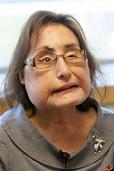Advertisment
ITS 2012 Report – The new era in transplantation: Face transplantation outcomes and challenges

by Maria Dalby – The first face transplantation to be performed in the USA took place at the Cleveland Clinic in December 2008.
A team of transplant surgeons led by Professor Maria Siemionow performed the operation on 45-year old Connie Culp who in 2005 had been shot in the face by her husband in a failed murder and suicide attempt. Professor Siemionow presented an overview of the challenges faced by the team and provided an update on the outcome.
The trauma had left Mrs Culp with extensive injuries both to soft tissues and bone – her nose, cheeks lower eyelids and upper lip were all missing and the maxilla had been completely destroyed, and she was unable to breathe on her own, could not eat solid food and had no sense of smell. By the time the transplantation was scheduled, Mrs Culp had already had 30 operations to try and reconstruct the structure of her face. In addition to the surgical challenges, Professor Siemionow and her team had to face a lot of media attention with the risk of breach of anonymity for both the donor and the recipient.
The operation itself involved replacing 80% of the recipient’s facial structure – the total surface area of the allograft was 535cm2. The surgeons had to integrate the different functional components and tissues including skin, musculature and bone, reconstruct the infraorbital floor and bilateral zygomas, and form the anterior maxilla with total alveolus anterior hard palate. All arteries, veins and nerves had to be connected. The operation took 22 hours and involved eight reconstruction surgeons, two transplant surgeons, four anaesthesiologists and more than 30 nurses and support staff. The operation is estimated to have cost around 500,000 USD in total.
Three and a half year after the operation, Mrs Culp can breathe through her nose, smell and taste, eat solid foods and drink from a cup. She has shown no signs of post-traumatic stress disorder and has regained her confidence and self-esteem. Her pain score, which was 8/10 before the operation, has dropped to 1/10. Two episodes of rejection have occurred, the first one on day 47 which was found on biopsy, and the second one on day 459 on observation. Both cases resolved within 17 days as shown on biopsy. Mrs Culp has also been treated for CMV infection on several occasions. Sensory function has been monitored at frequent intervals and shows a dramatic improvement in the ability to smile and pucker in the first 12 months post-transplant.
Mrs Culp is now working actively as a campaigner for victims of burns and other disfigurements. Professor Siemionow finished by showing a video clip of Mrs Culp thanking the team and expressing her delight at not being seen as a ‘monster’ any more.
Maria Siemionow, Cleveland Clinic, USA





